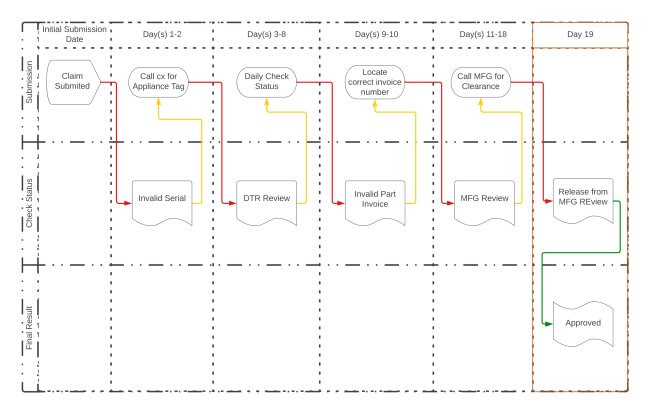
The Warranty Claim from Cradle to Grave
Most claims file on the first submission and are placed in a status of Submitted, Forwarded or Accepted in many of the portals used for claims filing and processing. But what happens when they don’t pass on the first attempt?
You have undoubtedly heard the old cliché, “garbage in, garbage out,” which can be used to describe why some claims do not pass the initial rules validation on the first submission. Some of the most common reasons include:
- Data entry errors with the top culprits being model, serial and part numbers
- Invalid or missing part purchase invoice numbers
- Missing picture of the product tag and/or consumer proof of purchase
- Missing required information which varies by job source
In addition to errors made by the service provider, the systems used to file claims may not always contain the correct logic. In these situations, you need the attention of the manufacturer or third party administrator to provide proof that you are right. How many times have you seen the error, “Invalid Purchase Date,” when the entitlement record and the customer’s proof of purchase date have the same date used on the claim? Another example we experienced was a GE claim for an electric dryer model GTX52EASP0WB that rejected for being Out of Warranty when the unit was serviced in its second year after the purchase. In this case the product carries a 5-year manufacturer’s limited warranty. In order to resolve this issue, we had to email GE and request the claim be overridden for payment. The bottom line is simply this – Don’t simply accept all rejection reasons as valid. Always double check!
Two Levels of Validation
There are two levels of validation on home appliance service claims where parts were replaced. First your data will be validated by the manufacturers’ processing system and must be correct before it can pass to the second level of validation involving a parts distributor. Parts distributors’ turnaround time can vary from two days for some to nearly a week for many others.
The diagram shown below is the process flow for a sample claim that did not pass on the first submission. In this example, which includes most of the claims that do not get approved on the first submission, it can take up to three weeks to get a final status on a claim. This will take even longer if you do not check the status of your claims on a daily basis.

In summary make sure each claim is checked for errors you can correct before they are submitted. Also, always check the status of your claims on a regular basis in case a secondary error arises. Finally, if you know for a fact a rejected claim is correct, such as the example given above, contact the manufacturer for resolution. Don’t leave your hard-earned money on the table!
Read more informative articles to successfully process your warranty claims here.



